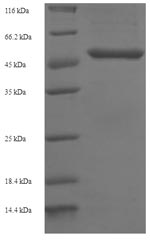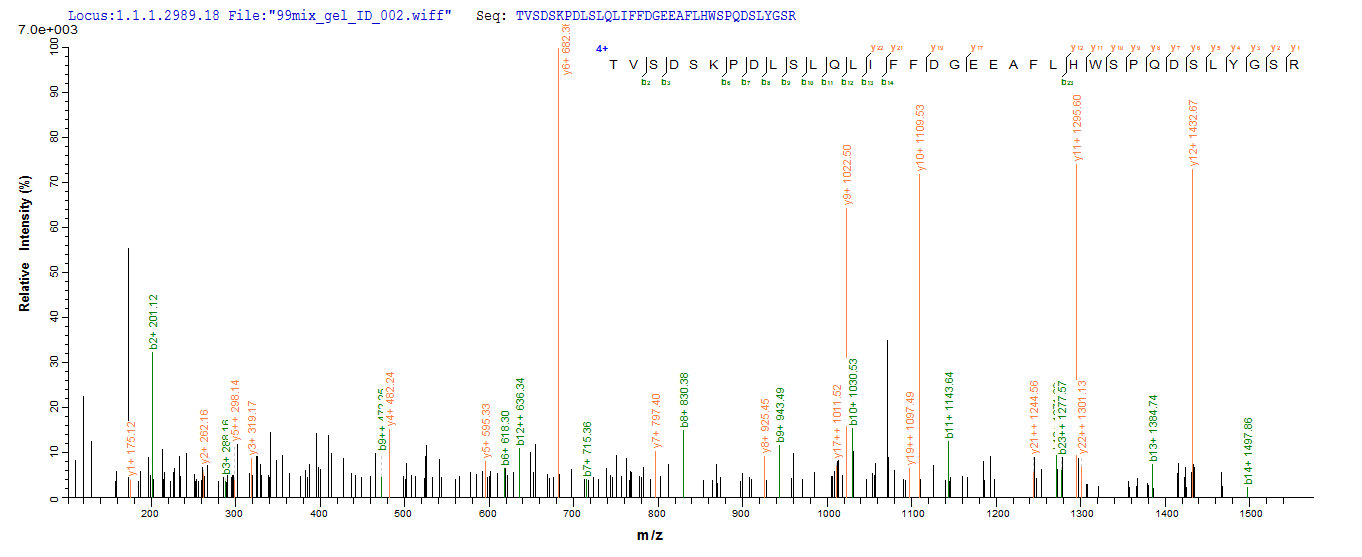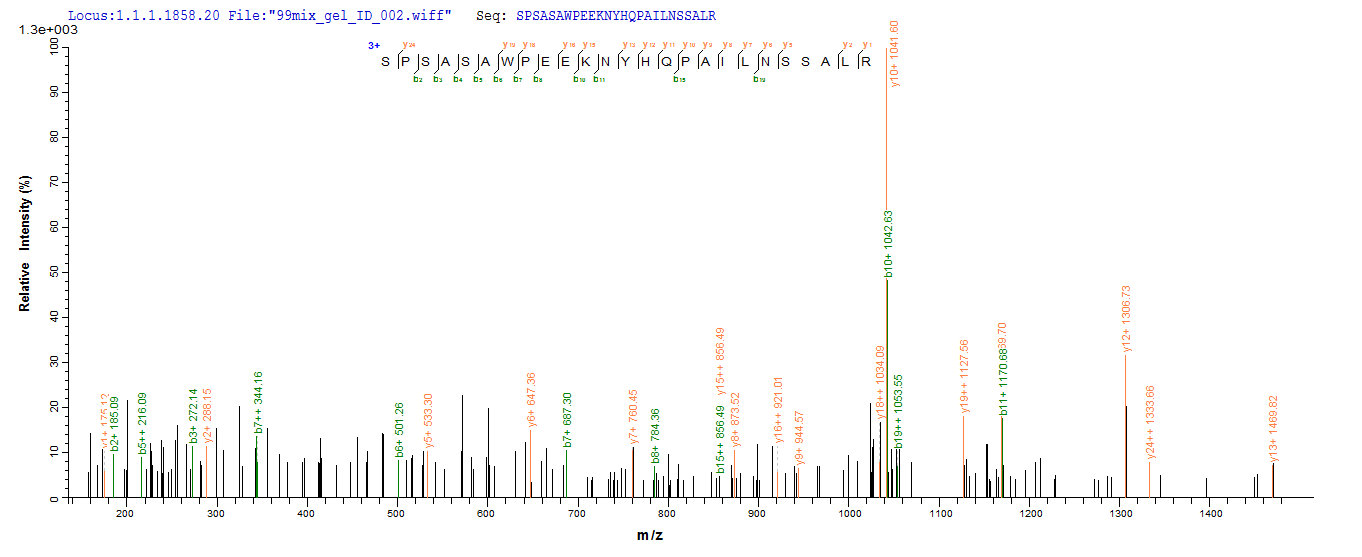Full-length of mature human glutaminyl-peptide acyltransferase(QPCT) cDNA carrying an N-terminal 6xHis-SUMO-tag was expressed in E.coli. The resulting protein is the recombinant fusion protein consisting of 29-361aa of human QPCT. It was validated by LC-MS/MS analysis. The SDS-PAGE showed an about 47-51 kDa molecular mass of this protein and determined the purity of over 90%. In-stock QPCT proteins are offered now. This recombinant QPCT protein may be used to produce specific antibodies or in the studies of neuroscience.
QPCT catalyzes the conversion of the N-terminal glutamate of proteins to pyroglutamate. This process makes the protein more resistant to protease degradation, more susceptible to hydrophobic interactions, aggregation, and neurotoxic. Ziyan Wang etc. demonstrated that QPCT knockdown led to the down-regulation of prophenoloxidase and crustin antimicrobial peptide. And QPCT may contribute to the replication of the White spot syndrome virus (WSSV).








